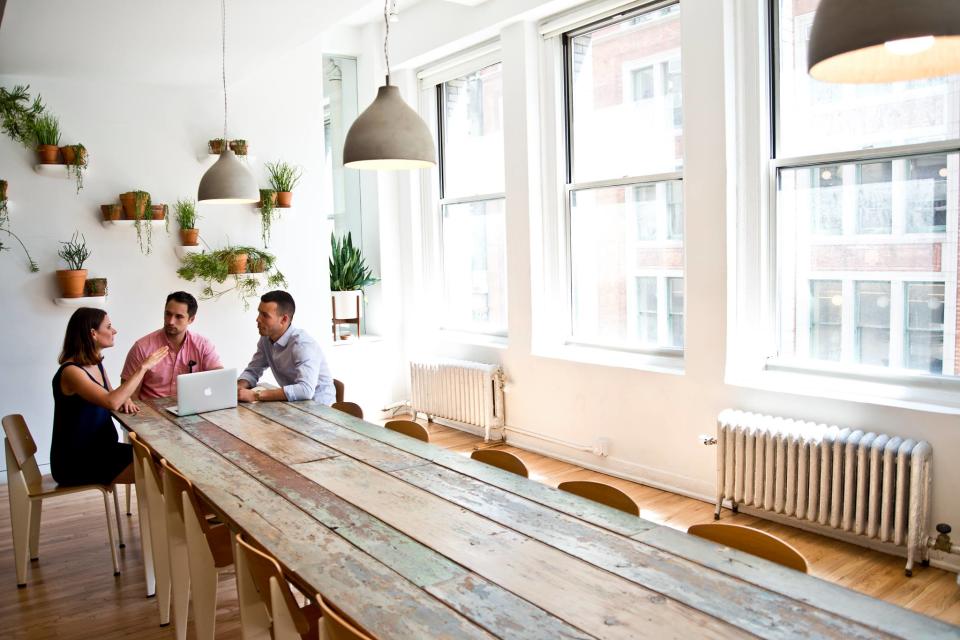Ben did this three-month course – and then walked into a $105k job

They say changing jobs is one of the best ways to score a pay rise.
But what if you change industries entirely? You’d think you’d have to start again from the bottom of the corporate food chain and work your way up to a decent salary with time and experience.
This wasn’t the case for Sydney-based Benjamin Wong, who quit his $52,000 job, studied a three-month course, and found himself being offered a $105,300 role (including super) as a user experience (UX) designer.
Also read: How this Aussie expat travels across Europe and still earns $15,000 a month
Also read: How this Australian mother made $201,000 without a full-time job
An end and a new beginning
In mid-2017, then-24 year old Ben had hit an all-time low in job satisfaction as an operations assistant at a subtitling and captioning services company.
He had studied Digital Media at the University of New South Wales, but while the degree had given him a taste of many forms of media, it didn’t equip him to be highly skilled in any one area.
A colleague who was quitting the company sparked his curiosity when he said he was leaving to study coding at an education provider called General Assembly, which trains professionals up in marketing, business, user experience (UX) and design, data and more.
As the months went on, Ben was growing increasingly unhappy, and was ready for a change.
“There was no real job progression that I saw in that industry, and I said, ‘honestly, screw this, I’m out,’” he told Yahoo Finance.
He rang up General Assembly with the intention to keep his job and study part-time on the side, but ended up choosing to study UX design full-time for three months given he was seeking to change industries completely, not just up-skill.
“They’ll give you everything you need to know to get you up to speed, because of the sheer amount of contact hours you have.”

So, in October 2017, he quit his job, and by November 2017 found himself as a student again.
The course doesn’t come cheap – around $10,000* for three months – but Ben was encouraged by the fact that the monthly $1,000 payments would not commence until two months after the course was completed, by which point 90 per cent of students had landed a job.

The three-month course that changed his career
The course ran from 9am to 5pm Monday to Friday and put him in the same room as other individuals from all walks of life.
“There was one person who used to do social work, there was one who was a maths teacher, one person who used to be an engineer,” he said.
“They come from very varied backgrounds, which wouldn’t probably have a lot of crossover with something like UX design, but they all are working in UX design now.”
According to Ben, the course runs you through the basics of UX design principles, meaning total beginners are eligible to do the course. While he had had some familiarity with design due to his degree and the logo designing he had done previously, it didn’t give him a significant edge; by the end of the course, everyone was on the same page and were beginning to specialise in certain areas within UX design.
The first month is dedicated to learning, and then becomes largely project work towards the latter end of the course, where you are able to work on a real client and develop a real solution.
The last three weeks are then geared towards helping students develop the skills they need to secure a job in the industry, and General Assembly sets up a “reverse fair night” where students are able to showcase their work to employers, and employers can scope out fledgeling UX designers who specialise in areas where they need jobs filled.
It’s also where Ben met his current employer, Western Sydney University. Now, Ben designs and creates web pages, modules and even games on the WSU website that will be used by students, academics and the general public.


‘Far and away better’
But the change has been much more than a bigger pay-packet.
“My situation now is far and away improved in terms of both the work I do, the fulfillment I get out of it, and also – and I’m very lucky – a work-life balance thing. It’s far and away better,” he said.
While the commute is longer – he has to drive to and from Penrith every day – he is able to enjoy a social life and regular sleep pattern. In his previous job, it was normal to go from a 7am-3pm shift one day, 9am-5pm the next, 3pm-11pm after that and 7am-3pm again.
“If I wanted to skate during the 3pm-11pm shift weeks during summer, I couldn’t because it was too hot outside. So I had to sacrifice certain things,” he said.
Not only does he have regular 9-5 hours, he also gets ‘flex time’, which lets him accumulate overtime hours and convert it into a day off.
And job satisfaction is way up. “Now, I feel like I have a lot more reach,” he told Yahoo Finance. “A lot of the courses that we [design] will be seen by a lot of students.”
*Note: According to the General Assembly website, the UX Design Immersive course in Sydney now costs $13,500. This figure was lower when Ben studied it in 2017-18.
Have you got a career success story? Email me at jessica.yun@yahoofinance.com.
Make your money work with Yahoo Finance’s daily newsletter. Sign up here and stay on top of the latest money, news and tech news.
Follow Yahoo Finance Australia on Facebook, Twitter, Instagram and LinkedIn.

 Yahoo Finance
Yahoo Finance 
